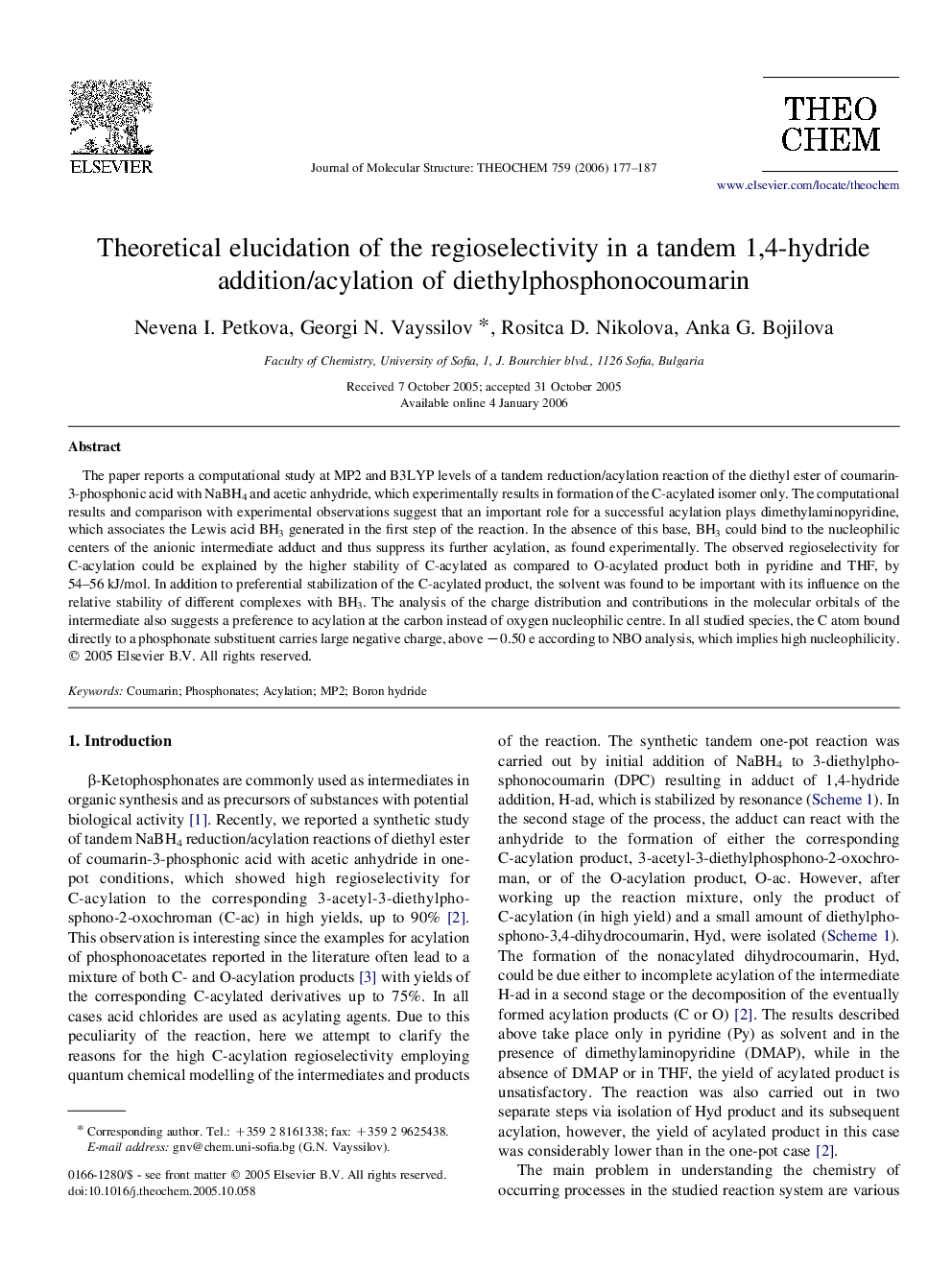| Article ID | Journal | Published Year | Pages | File Type |
|---|---|---|---|---|
| 5419190 | Journal of Molecular Structure: THEOCHEM | 2006 | 11 Pages |
Abstract
The paper reports a computational study at MP2 and B3LYP levels of a tandem reduction/acylation reaction of the diethyl ester of coumarin-3-phosphonic acid with NaBH4 and acetic anhydride, which experimentally results in formation of the C-acylated isomer only. The computational results and comparison with experimental observations suggest that an important role for a successful acylation plays dimethylaminopyridine, which associates the Lewis acid BH3 generated in the first step of the reaction. In the absence of this base, BH3 could bind to the nucleophilic centers of the anionic intermediate adduct and thus suppress its further acylation, as found experimentally. The observed regioselectivity for C-acylation could be explained by the higher stability of C-acylated as compared to O-acylated product both in pyridine and THF, by 54-56Â kJ/mol. In addition to preferential stabilization of the C-acylated product, the solvent was found to be important with its influence on the relative stability of different complexes with BH3. The analysis of the charge distribution and contributions in the molecular orbitals of the intermediate also suggests a preference to acylation at the carbon instead of oxygen nucleophilic centre. In all studied species, the C atom bound directly to a phosphonate substituent carries large negative charge, above â0.50Â e according to NBO analysis, which implies high nucleophilicity.
Related Topics
Physical Sciences and Engineering
Chemistry
Physical and Theoretical Chemistry
Authors
Nevena I. Petkova, Georgi N. Vayssilov, Rositca D. Nikolova, Anka G. Bojilova,
